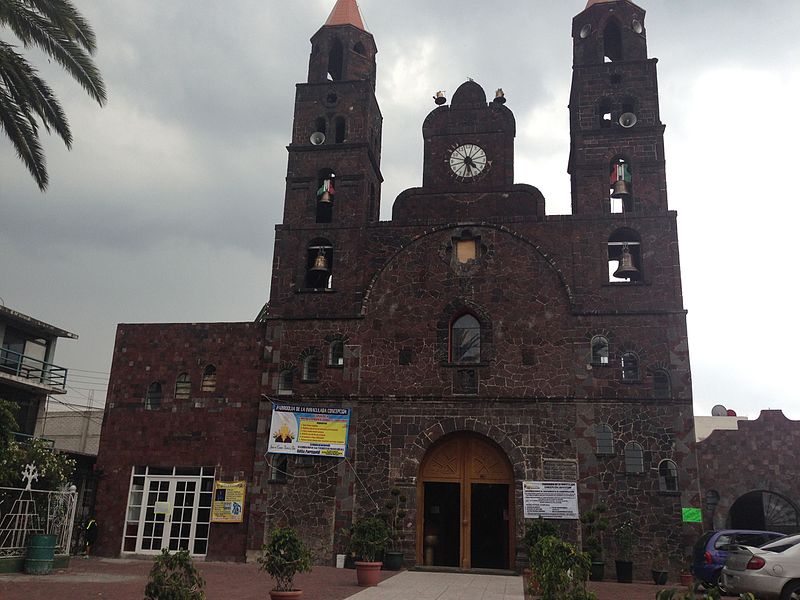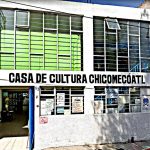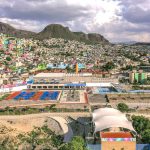
The Church of the Immaculate Conception was originally begun in 1541. Finished only in 1641, it was, and remains, a simple church. It’s also known as the Templo de Santiago Zapotitlán. However, the structure we see today was built in 1933. The older church was known to have been used as the backdrop for festivals and traditional ancestral performances. The church’s feast day celebrates the Lord of Mercy each December 8.
The church atrium is surrounded by a low brick wall, with a few palm trees separating it from the larger Plaza Juárez. It’s the sort of haunting, tezontle-clad church that stirs both a nervous feeling, and deep wonder. The interior is as stunning as any in the city.
A legend from the middle of the 17th century has a group of Zapotitlán residents traveling with an image of the Lord of Mercy to Mexico City. Passing through the Taxqueña area, they stopped for a drink. Apparently, the alcohol so enraged the Lord, that the image vanished from the painting before the very eyes of the faithful. At the same time, a family from Pueblo de los Reyes, Coyoacán, was passing nearby and heard a child’s cry. In seeking the sources of the crying, they discovered among the reeds and bushes the image of the Lord of Mercy, and they took it to the friars of the Parish of San Juan Bautista Coyoacán so that the monks could decide what to do with it.
Sources cited on this page:
Carlos Mancilla Castañeda, Nosotros,
Santiago Zapotitlán, una cronología histórica
 55 9134 5447
55 9134 5447
 https://www.facebook.com/profile.php?id=100064568299247
https://www.facebook.com/profile.php?id=100064568299247

Nearest at 0.03 kms.

Nearest at 0.22 kms.

Nearest at 0.29 kms.

A major recreational development in the Quetzalcoatl Urban Development. . .

One of Iztapalapa's most beautiful urban parks...

Iztapalapa's most sustainable and eco-conscious Utopia . . .

Chicomecóatl is a neighborhood center and cultural hub for communities in the shadow of the volcano.

A water-themed sports and cultural center on the northern slopes of the Sierra de Catarina.